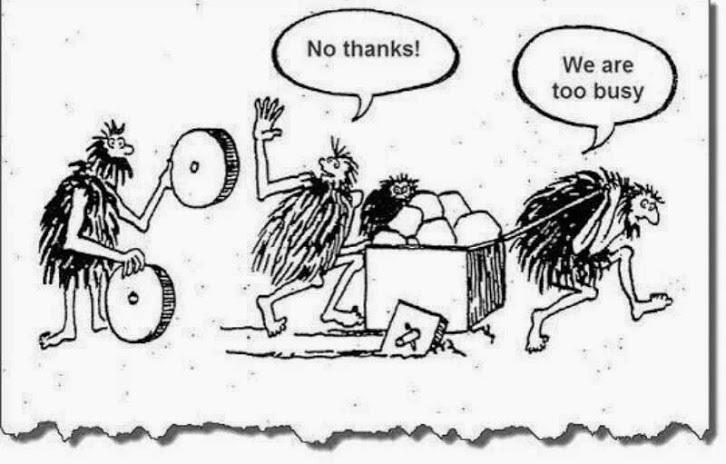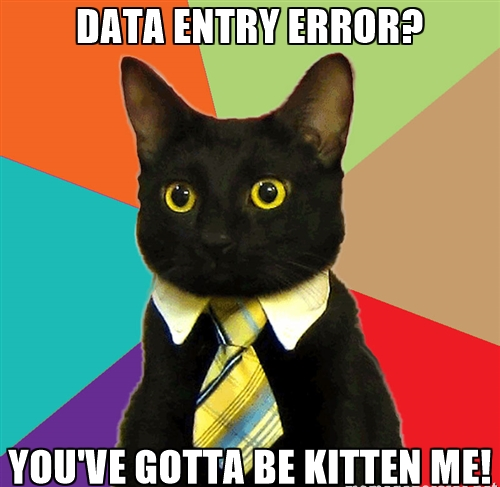We live in the age of smart-watches that tell us how many steps we’ve taken, calories we’ve burnt, give us notifications from our phones etc. And yet the field inspection industry has been rather hesitant in embracing technology to make use of its full potential. In this article lets go over a few reasons why field service management companies may find it difficult to move to the new world order of mobile phones and web apps.
Inertia
One of the major hurdles in the widespread adoption of technology in the field inspection industry is the inertial tendency of habit. It is difficult to change the way things are routinely done. There is obviously the discomfort associated with the transition phase when employees and administrators have to relearn the techniques used to perform tasks, that they used to do with ease earlier, out of habit. But besides that, there is the very real economic cost of downtime associated with the transition period, when the system is being installed as well when productivity drops while the workings are being learned.
Usability
Physical forms are intuitive and easy to use, we’ve been using them for centuries. It’s easy to quickly jot down observations, make notes etc on a handy piece of paper, there’s a reason that 3M’s Post-it notes became a runaway success once people got their hands on them.
Nowadays though, the handheld electronic mobile device is ubiquitous. It is, as a matter of fact more likely that one would have a mobile device at hand than paper to take some notes on today! When dealing with physical forms though, obviously dedicated forms are used for the recording of information and not a scrap of paper found at hand. It would however make the process of recording information much easier on the agent involved if the forms are stored on a digital device and possibly the agent’s own device as per the BYOD philosophy.
The process of actually filling out the forms and recording the data, are currently at about the same level of difficulty; writing or drawing on physical forms and keying in text or drawing onto a device screen. Most people nowadays are not only well accustomed to using a virtual keyboard on a device screen to enter text but are fairly adept at it too.
Bottleneck
When the information has to be used however, things change. The data on physical forms has to be fed into a digital system, since we use digital systems nowadays. They have to be painstakingly entered which is a cumbersome process. This is a major bottleneck in the process as no other work can be done until this information is entered. The physical forms have to be brought or sent to the location where the data can be entered as well for this to happen.
Alternatively, when it comes to software, the data is entered into a digital system at the beginning of the process. This digital data can be automatically synchronised with the back end or even just sent electronically if it has to be sent in as well. Thus the data is instantly sent back for reports to be created or for any other purpose eliminating that bottleneck altogether.
Archival and retrieval
Forms often have to be pulled up for reference in the future and archiving them properly can make this process swift. Physical forms need to be stored physically and indexed properly for reference to be an option in the future. They take up a lot of space and need an enormous amount of sifting whenever information is to be retrieved.
The same task in the digital realm is uberously simpler. The data can be archived to be stashed out of view for daily activities, but when retrieval of information is required, a simple search string could be used to pull it up given that the entries are all indexed.
Added functionality
Digitally acquiring data would also mean that images can be added directly to the form data for a clearer picture to be obtained of what is being inspected.
Automated reminders can be generated and sent to both agents as well as administrators informing them of pending inspections that are nearing their due date. Agents can also receive push notifications on their devices that will inform them of tasks assigned as they get assigned to them.
The digitizing of data at the onset has the added benefit of automation; when data is entered digitally, the data can be reformatted and reports comprising the data can be generated automatically. Software systems would speed up the entire process manifold.
Another added benefit is that the mundane, repetitive tasks that agents previously dreaded doing, will be made much simpler if not allowing them to completely avoid doing them altogether, thus giving them more productive time to thoroughly complete their inspection tasks.
Wrapping up
Sorting, retrieval, archival, etc all take merely seconds to do rather than being the laborious process that they would be in the case of physical forms. At the end of the day, moving to a digital, mobile field inspection software solution may take a little time and effort to do, but will be worth the investment.
Ashmitha Chatterjee
Ashmitha aspires to enhance the efficiency of service technicians. With a unique perspective on the challenges and opportunities within field service management, Ashmitha frequently shares her knowledge through industry blogs, articles and workshops.
More posts by Ashmitha Chatterjee




